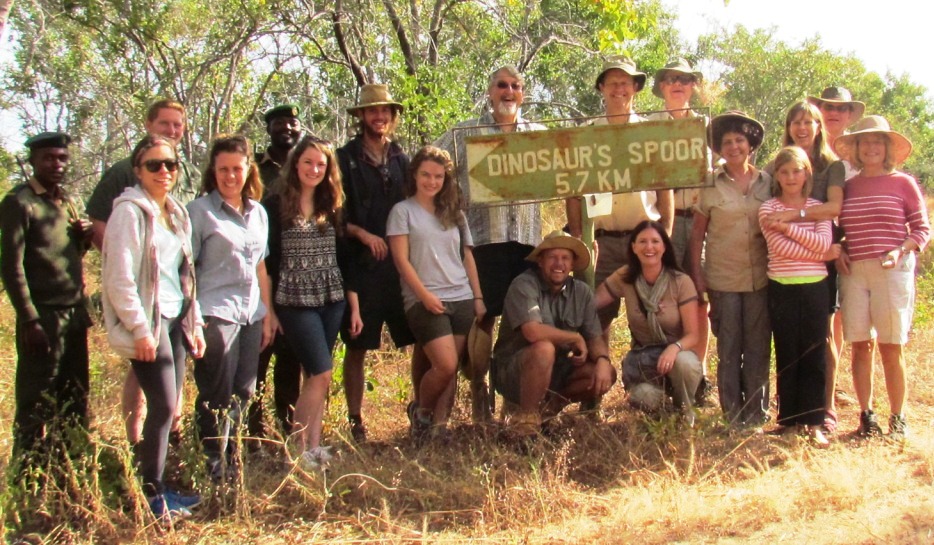Advertisement
Chewore Dinosaur Field Trip - May 2015
Submitted by Andrew du Toit on Tue, 26/05/2015 - 10:38
The Geological Society of Zimbabwe organised a field trip to the Chewore-South Area, from Saturday the 23 th of May to the Monday 25 th of May.
The trip was lead by Ali Ait-Kaci, organised by Gayle Hanssen and concerned 17 people.
Departure on the Saturday the 23th, 7h30, from Mazoe Dam. A field trip guide was distributed to the participants (Thanks to the Mining Engineering Institute, UZ, for the printing). We drove to Guruve, crossed the Escarpment at Mahuwe, passed Mushumbi Pools then had a first stop at the Fossilified Forest, 17 km after Mushumbi Pools. We saw also the fossil plants of the Pebbly Arkose Formation, few km after the Angwa River Bridge. We found only one leave (Dicroidum?)!
We arrived at the Mkanga Bridge National Parks Station around 4 pm for formalities and a poster on the dinosaur footprints of the area was offered, on behalf of the Society, to the Station's Manager, Mr Sandram Simba. Then we ended at the Mana-Angwa hunting camp where we spent the two next nights (Thanks to the Safari Hunting Operator, Mr Adrian Read who allowed us to stay there, at almost no cost!).
The second day was the real "Geology and Palaeontology Day". We went first to the first dinosaur trackway discovered in 1984 and surveyed the same year by Tim Broderick. Thirteen prints are currently visible (after some digging of the river sand). Then we started the tour of the dinosaur footprints sites of the Ntumbe River. More and more prints were found during the last two years by the Scouts of the Mkanga Bridge Station, and they took us to almost all of them. Theropods, Sauropods, minute enigmatic prints and so on, all born by the "Ntumbe Beds" (Late Jurassic?), according to the T. Broderick interpretative map of 1987. We looked also after outcrops bearing Conchostacans fossils (a tiny clam-shrimp) and we found one, bearing a lot of them, but also Lepidote fish scales (a kind of armoured fish known since the Devonian). One of them we found is about 1 cm-long. Almost everybody in the group found something! And as we were going back to the cars, B. Barber found a river boulder bearing on both sides very well preserved skins of Lepidotes with numerous scales .
.
 .
.On the afternoon, we visited one of the sites of the Mana-Angwa confluence, where Forest Sandstone beds (Upper Karoo) are bearing Massospondylus bones (Raath.&al., 1970). The site was dramatically eroded by heavy floods last month. Many bones we saw in the last years were washed away. But still remains an articulated Massospondylus on the top of the outcrop, showing articulated back limbs and rib cage bones. But it was a wonderful place for a sundowner!
We ended the trip with a Sunday evening braii, star-gazing and so on....
We came back to Harare on the Monday the 25 th of May.
Ali Ait-Kaci, Chairman
25th of May, 2015

